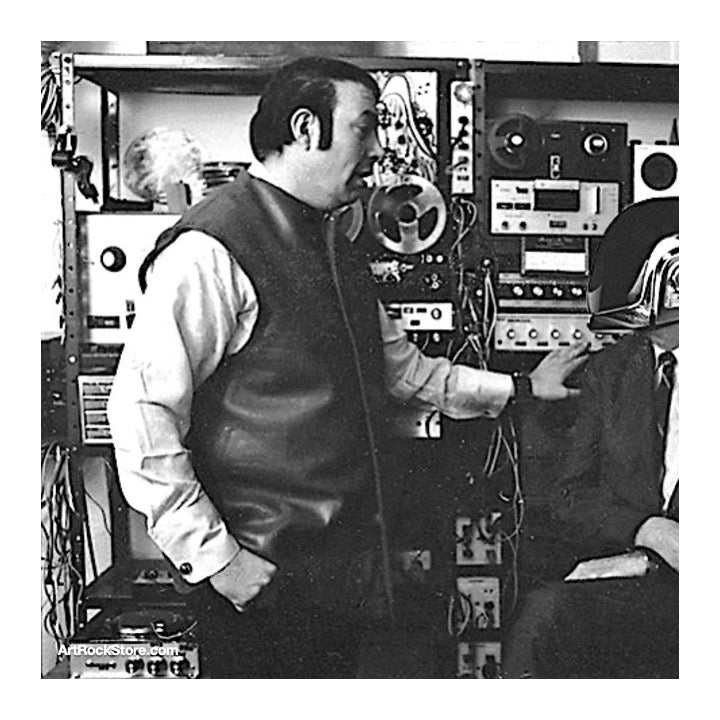
Bruce Haack | Artist
Bruce Clinton Haack was a Canadian electronic musician and composer born 1931 in Nordegg, Alberta. Haack started out writing inventive children's songs in the '60s then graduated to acid-rock influenced compositions such as the 1970 cult classic The Electric Lucifer. His music was unusually expressive, combining homemade analog synths; classical, country, pop, and rock elements; and surreal, idealistic lyrics. Haack's innovations still sound fresh, making his music a favourite with fans of analog synths and esoteric recordings. Demonstrating an early ability for music, Haack is said to have started picking out melodies on his family's piano at age four, and progressing to teaching piano by age 12. While attending the University of Alberta, Haack began performing in local venues with a popular local band called The Swing Tones. He received a degree in psychology from the university; this influence was felt later in songs that dealt with body language and the computer-like ways children absorb information. Graduating in 1954, Haack then attended the Juilliard School in New York where he met like-minded student, Ted "Praxiteles" Pandel, with whom he developed a lifelong friendship. However, he dropped out of Juilliard just eight months later, rejecting the school's restrictive approach. Throughout the rest of his career, Haack rejected restrictions of any kind, often writing several different kinds of music at one time. His early scores, like 1955's Les Etapes, which suggested the futuristic themes and experimental techniques he developed in his later works, employed mixed tape samples, electronics, soprano, and violin; the following year, he finished a musique concrète piece called "Lullaby for a Cat." As the 1960s began, the public's interest in electronic music increased and Haack appeared on popular TV shows often playing the "Dermatron", a touch and heat sensitive synthesizer, held to the foreheads of guests. 1966's appearance on I've Got a Secret featured Haack playing 12 "chromatically pitched" young women. Haack wrote serious compositions as well, such as 1962's "Mass for Solo Piano", which Pandel performed at Carnegie Hall. Although he had little formal training in electronics, Haack made synthesizers and modulators out of any gadgets and surplus parts he could find, including guitar effects pedals and battery-operated transistor radios. Eschewing diagrams and plans, he improvised, creating instruments capable of 12-voice polyphony and random composition. Using these modular synthesizer systems, he then recorded with two two-track reel-to-reel decks, adding a moody tape echo to his already distinctive pieces. As the 1960s progressed Haack scored award-winning TV commercials for clients like Parker Brothers Games, Goodyear Tires, Kraft Cheese and Lincoln Life Insurance. He also appeared on the hugely popular Mister Roberts' Neighbourhood show in 1968, where he sampled the Rolling Stones song "Citadel". Acid rock was a perfect match for Haack's style, and in 1969 he released his first rock-influenced work, The Electric Lucifer, a concept album about the earth being caught in the middle of a war between heaven and hell, on Columbia Records. Haack went on to record many more children's works but further acid-rock recordings only appeared as archival releases after the artist's death in 1988. Standout albums include The Electric Lucifer (1969), Electric Lucifer: Book II (2001), and Haackula (2008). Also recommended is the 2012 album Bruce Haack Remixes, which has contributions from a range of artists including Jonti, Peanut Butter Wolf, Jonwayne and Samiyam. Haack: The King of Techno is a documentary film about Bruce Haack by Philip Anagnos, released in 2004 at the Slamdance Film Festival.
Artist Website: brucehaack.com
Featured Albums: Bruce Haack
Related Artists: Tiny Tim
